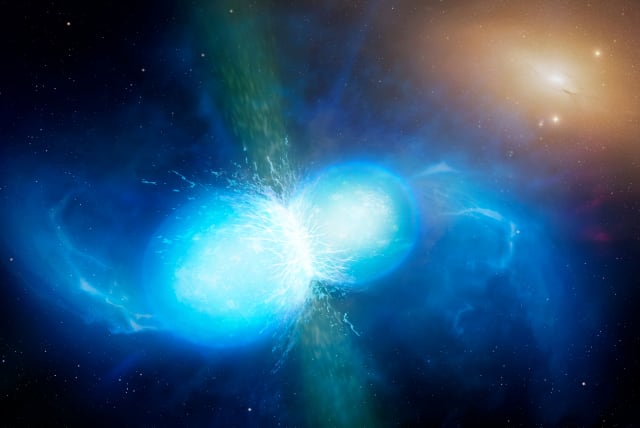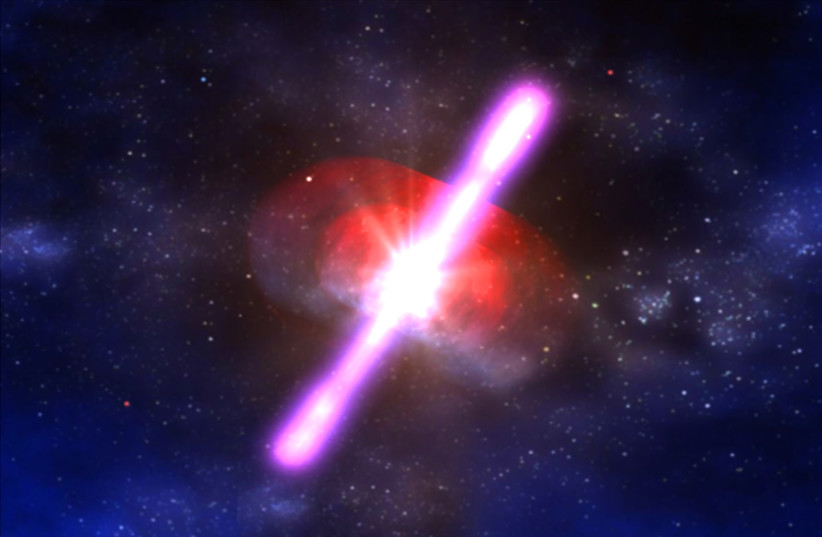The collision of stars rockets scientists' understanding of physics

Scientists have detected cosmic "bursts" which indicate the occurrence of a celestial event where stars collided, merged and collapsed into a black hole.
Scientists have detected signals of neutron stars merging together. The detectible evidence involved in this process is helping scientists to advance their understanding of physics.
In a study published by the peer-reviewed scientific journal, Nature, Cecilia Chirenti, a scientist from the University of Maryland, College Park, explains that they found that previously documented, "[s]hort gamma-ray bursts (GRBs) are associated with binary neutron star mergers."
Looking at the gamma-ray oscillations, or the repeated variations in the frequency of the gamma-ray wavelengths, that comprise these bursts, it is possible to gain insight into some of the details pertaining to these astral mergers.
In their paper, Chirenti and colleagues examine two bursts from archival data, which each indicate the formation of a neutron star from a merger.
Also writing in Nature, Paul Laskey of Monash University writes about Chirenti and colleagues' work. Neutron-star collisions "provide clues to some of the most intriguing problems in theoretical physics, including how matter behaves in conditions that cannot be replicated in the laboratory," Laskey writes.
Indeed, no laboratory on Earth would be able to replicate these collisions as they "involve densities [a quadrillion] times that of water," explains Laskey. This is approximately 125 trillion times the density of steel. Furthermore, they feature "temperatures ten million times hotter than the surface of the Sun and magnetic fields ten billion times that of the strongest magnet produced on Earth," Laskey writes.
The event was irregular considering our understanding of physics
These events are so indescribably massive and extreme that the physics involved are irregular and incalculable given the scale. Laskey goes on to explain that in the case of many neutron-star mergers, the immediate result is the creation of a neutron star that is, at minimum, twice the mass of the Sun. Simultaneously, such created neutron stars have diameters of merely 20-30 kilometers.
It is inconceivable that a star roughly the size of Israel's Golan Heights could be twice as dense as the sun. In perspective, the sun has a diameter 109 times that of the Earth, over 330 thousand times the mass, and a volume so massive that 1.3 million Earths could fit inside.
Furthermore, the newly birthed neutron star formed from the merger "rotates between 1,000 and 2,000 times per second [and the] collision is so violent that [the new] star undergoes frenzied oscillations as it rotates," Laskey describes.
Neutron star mergers have previously been detected and analyzed by the gravitational waves that they generate. However, by supplementing this method by looking at the gamma-ray oscillations associated with these events, as Chirenti and colleagues have, accessing much more precise information and new knowledge about the details and physics pertaining to these occurrences becomes possible.
Jerusalem Post Store
`; document.getElementById("linkPremium").innerHTML = cont; var divWithLink = document.getElementById("premium-link"); if (divWithLink !== null && divWithLink !== 'undefined') { divWithLink.style.border = "solid 1px #cb0f3e"; divWithLink.style.textAlign = "center"; divWithLink.style.marginBottom = "15px"; divWithLink.style.marginTop = "15px"; divWithLink.style.width = "100%"; divWithLink.style.backgroundColor = "#122952"; divWithLink.style.color = "#ffffff"; divWithLink.style.lineHeight = "1.5"; } } (function (v, i) { });

